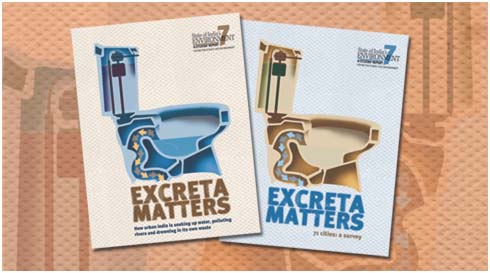Sanitation and Hygiene
Future at stake The dismal picture of education in Bihar and Nitish Kumars efforts to revive it
Posted on 22 Nov, 2014 10:30 AM“The current age is the era of knowledge and not of weapons, and only through education and knowledge can one break out of the abject poverty”. Wise words from Bihar’s Chief Minister Nitish Kumar, who believes that times have changed since his government took over: now is the time to pick up the pen and discover its power.
Background information for the Twelfth Year Plan Reports of the Planning Commission working groups
Posted on 22 Nov, 2014 10:30 AMThe Twelfth Five Year Plan of the Government of India commences during the year 2012-13. This plan has been developed following the recommendations of a number of Working Groups covering 26 different areas.
Handbook on technical options for onsite sanitation by the Ministry of Drinking Water and Sanitation
Posted on 22 Nov, 2014 10:30 AMThis handbook by the Ministry of Drinking Water and Sanitation provides sustainable technological options for on-site sanitation for different hydro-geological conditions. The hand book is divided into six chapters and a bibliography.
Privatisation of urban water supply in Khandwa Madhya Pradesh An update from Manthan Adyayan Kendra
Posted on 22 Nov, 2014 10:30 AMStartling conditionalities
Septic tanks or death tanks We need to improve sanitation facilities to eradicate the inhuman practice of manual scavenging
Posted on 22 Nov, 2014 10:30 AMAuthor : Gagandeep
“We have to end the biggest dehumanising activity called manual scavenging”
Occupational health hazards in sewage and sanitary workers A paper published in the Indian Journal of Occupational and Environmental Medicine
Posted on 22 Nov, 2014 10:30 AMWorking conditions of the sanitory workers have found to remain unchanged over the years and pose a considerable risk to the dignity and health of the workers.
Excreta Matters A profile of the water and sewage situation in 71 Indian cities A report by the Centre for Science and Environment
Posted on 22 Nov, 2014 10:30 AMGuset post: Amita Bhaduri

Source: Excreta Matters, Centre for Science and Environment, 2012
People in National capital territory of Delhi are far away from safe drinking water : Role of governance and civil society
Posted on 22 Nov, 2014 10:30 AMThe sanitation crisis in India An urgent need to look beyond toilet provision
Posted on 22 Nov, 2014 10:30 AMGuest post by: Aarti Kelkar-Khambete
Image Courtesy: Wikimedia Commons
The sanitation crisis and the recent evidence on lack of toilet facilities
Government of Rajasthan prepares a working draft of a rural sanitation and hygiene strategy 2012 2022
Posted on 22 Nov, 2014 10:30 AMAlthough significant progress has been made in terms of individual household toilet coverage in the state, usage by the population is still low at 12.9 per cent (DLHS 2007-08). Access to toilets for schools and angawandies has seen a marked increased but rural solid and liquid waste management has seen little or no attention.





